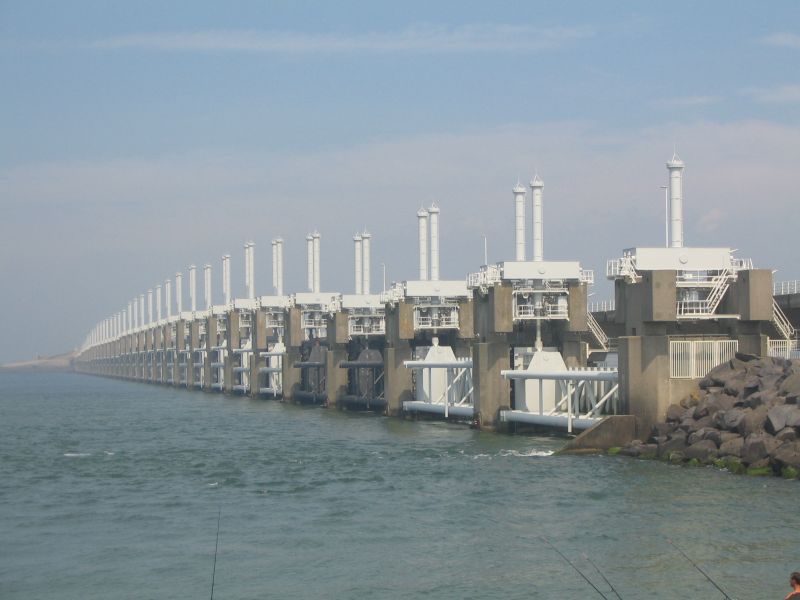Sea Levels off Dutch Coast Highest Ever Recorded in 2017
Published on by Water Network Research, Official research team of The Water Network in Academic
Storm surges and tidal cycles caused record sea levels along the coast of the Netherlands last year, a Dutch marine institute has found.
"The level has been rising gradually since 1890 by about 0.2 cm per year due to the melting of the ice and the warming up of the ocean," expert Fedor Baart, of the research organisation Deltares, said in a statement.

Flood barriers in the Netherlands, source: Wikimedia Commons
"That means that, as a rule, you expect the sea level to be higher every year."
Sea and water levels are carefully watched in the Netherlands, as much of the country lies below sea-level and is protected from flooding by a series of defences such as dykes, sand dunes, windmills to pump away water and sophisticated barrages.
In 2017, the institute measured the average sea levels along the Dutch coast to be 11 centimetres (over four inches) higher than normal water levels in Amsterdam, a gauge known as the NAP.
The previous highest reading was in 2007 when the water was nine centimetres above the NAP.
The institute said in 2017 "there were several storm surges in a single year for the first time since 2007," which had contributed to the high water levels.
Read full article: Agence France Presse
Media
Taxonomy
- Risk Assessment
- Infrastructure
- Infrastructure Management
- Oceanographic Survey
- Flood Risk Management
- Risk Management
- Flood Modeling
- Flood Mapping